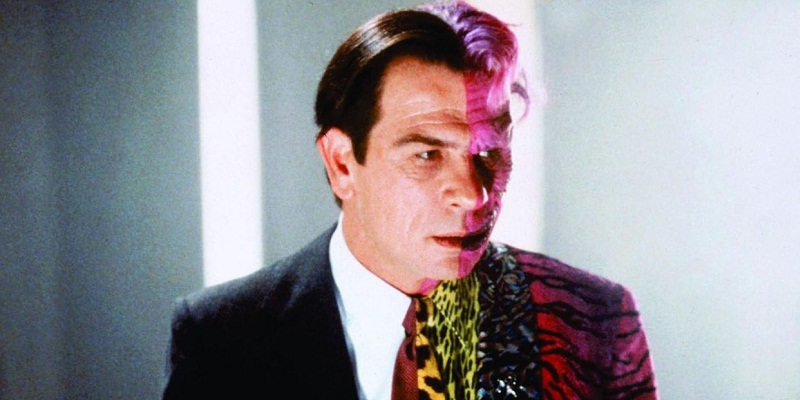|
|
After generations of suffering in silence, mental health awareness is now at the forefront of culture. In the world of super heroes and super villains, mental illness is an all too common underlying theme. The casual fans are familiar with the PTSD Batman faced after watching his parents killed but may not know he suffered this same fate after Joker killed Jason Todd, and Jason Todd’s subsequent battle with PTSD as he became The Red Hood.
Casual fans see Two-Face as a prime candidate for Dissociative Identity Disorder but may not catch the Coin Flip is a compulsion from the character’s Obsessive-Compulsive Disorder. Thanks to the Iron man films, Iron Man faced anxiety and alcoholism, though on a much smaller scale than the groundbreaking 1979 Demon in a Bottle story arc tackling his alcoholism. Dual diagnoses are all too common in real life, and the same goes for these comic multi-verses.
An entire thesis could be presented with every single one of these characters and their respective diagnoses, so this will be a generalized overview. Many people living with mental illness are often dual diagnosed. The most well-known being addiction and depression. Characters like The Comedian from Watchmen and Arsenal from DC turn to drugs and alcohol to cope. However, in many cases, there are multiple mental disorders such as Bi-Polar and Schizophrenic, called Schizo-Effective.
Another combination is Obsessive Compulsive Disorder and Anxiety. All of which are all too commonly compounded by Depression sprinkled on top. Or in some cases like Deadpool, the Joker, and this humble author, have an amalgam of mental disorders. As mentioned before, Iron Man was a great portrayal of dual diagnosis in the Marvel Cinematic Universe. Jarvis informed Tony he was having a panic attack, as well as Depression, and PTSD, after the apocalyptic vision Scarlet Witch showed him during Age of Ultron.
Post-Traumatic Stress Disorder is all too common amongst superhero origin stories. Marvel’s Netflix series Jessica Jones brought her battle with PTSD to the small screen. DC has recently released the title Heroes in Crisis, with the underlying theme of the trauma superheroes must overcome. Thor in Avengers: Endgame, is a great example of a depressive episode resulting from PTSD, but not suffering from Depression. He experienced a trauma, so he became extremely apathetic, and seemingly an alcohol suggested by his new dad bod.
He was very sad, as he rightfully should have been, but without more than one episode, he would not have been classified as having Depression. His character in Endgame could also resemble symptoms of PTSD originating from The Snap or The Blip. DC’s Rebirth introduced a new Green Lantern, Jessica Cruz. The green lanterns are powered by WILL, but as a superhero with anxiety, she sometimes lacks the will to even get out of bed. DC does a great job of portraying real-life anxiety in the mind of this superhero.
She helps the Justice League stop a sea monster, then catches a submarine by manifesting her powers as a Green Lantern. Despite the external battle being over, she is still battling her biggest demon, her anxiety. She tells herself she can’t hold the submarine, that she doesn’t belong amongst these other heroes, that she is not strong enough. Then it happens again and it leads to her getting knocked down by a weak villain, subsequently leading to a confrontation with another Green Lantern, Simon, Jessica goes home, constantly reliving all the doubts, and does not get out of bed to meet Simon for breakfast as was their routine.
The story ends with fellow Simon, in her kitchen making her pancakes to show she doesn’t have to fight this alone either. Daredevil is another Marvel character dealing with depression, and unbeknownst to casual fans, his mother left his father and him due to suffering postpartum depression. Writers have even tackled Agoraphobia, or the fear of leaving one’s home. During World War Hulk, Robert Reynolds, known as Sentry, could stop Hulk as he has the power of 10000 exploding suns. Sentry also has a “dark side” called the Void. Choosing to use the term “Void” representing the void he feels as part of his crippling agoraphobia.
One common complaint, the writers’ use his agoraphobia as a plot point to continue the story. This tactic receives criticism as lazy writing and lends to Sentry being a disliked character. But for the sake of mental illness, it does portray agoraphobia and give it a brief spotlight. Domestic abuse has also been a theme presented to comic book fans. The most notorious being the relationship between Harley Quinn and the Joker. But the original Ant-Man, Hank Pym was also abusive to his wife, the Wasp, which subsequently lead to her leaving him.
There are a few fan favorite characters addressing Dissociative Identity Disorder, formerly known as Multiple Personality Disorder. Marvel fans have been voicing their desire for the presence of Moon Knight in the Marvel Cinematic Universe. Moon Knight is a cult favorite among Marvel fans. He has three identities, Jake Lockley, Marc Spector, and Stephen Grant. Legion is another character dealing with DID, but in a much different manner. Each of Legion’s identities each come with different superpowers. Legion is said to have thousands of personalities within him
With mental health awareness on the rise, so are characters specifically meant to represent mental illness. Frank Gaskill and Ryan Kelly are both doctors, specializing in the Autism Spectrum. With their knowledge they created Max Gamer. Max Gamer, also the name of the comic run, has Asperger’s syndrome, now referred to as Autism Spectrum Disorder. The creators do not portray his ASD negatively, in fact, they use the “symptoms” of ASD as his superpowers.
All these characters have battled villains to save the world, while battling the villainous mental illness within. While they may be superheroes that pop culture idolizes, never forget, in the real world, it takes super human strength to overcome these potentially crippling disorders.
Mike Hoff

